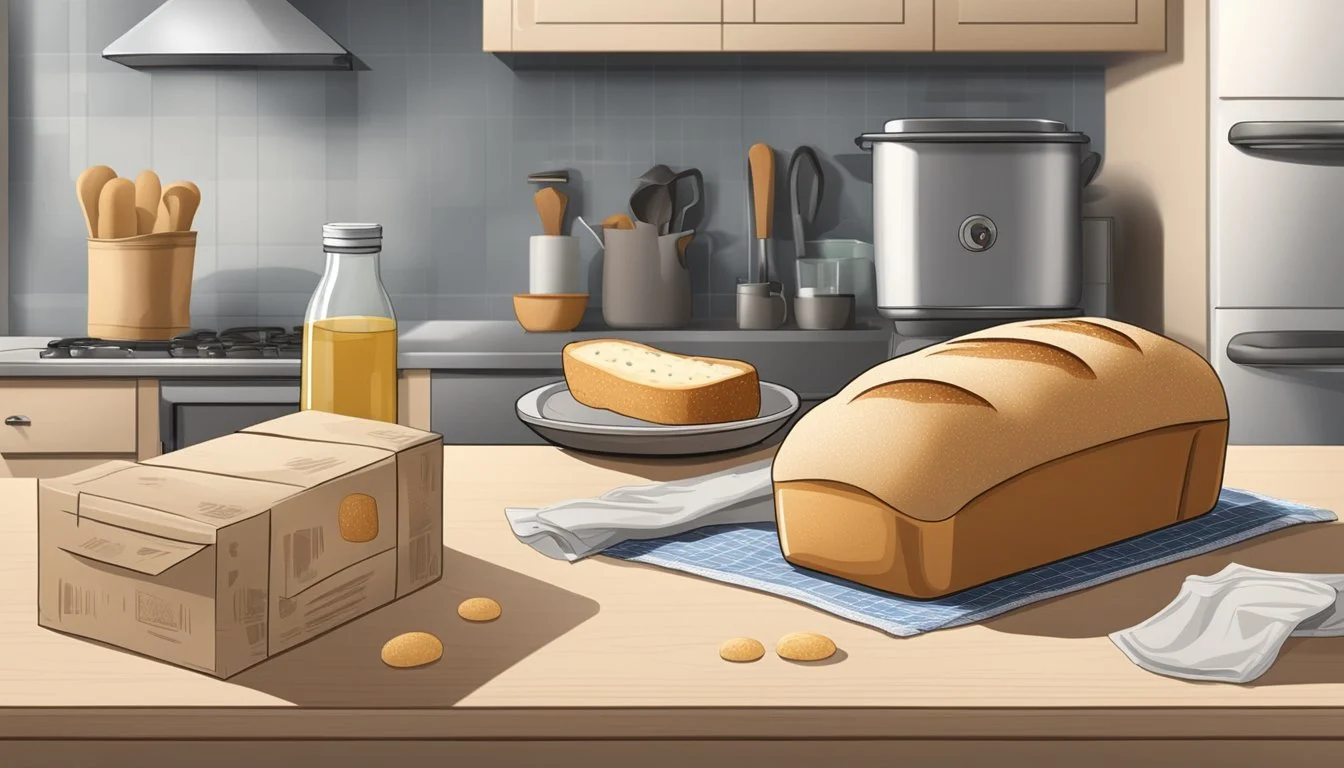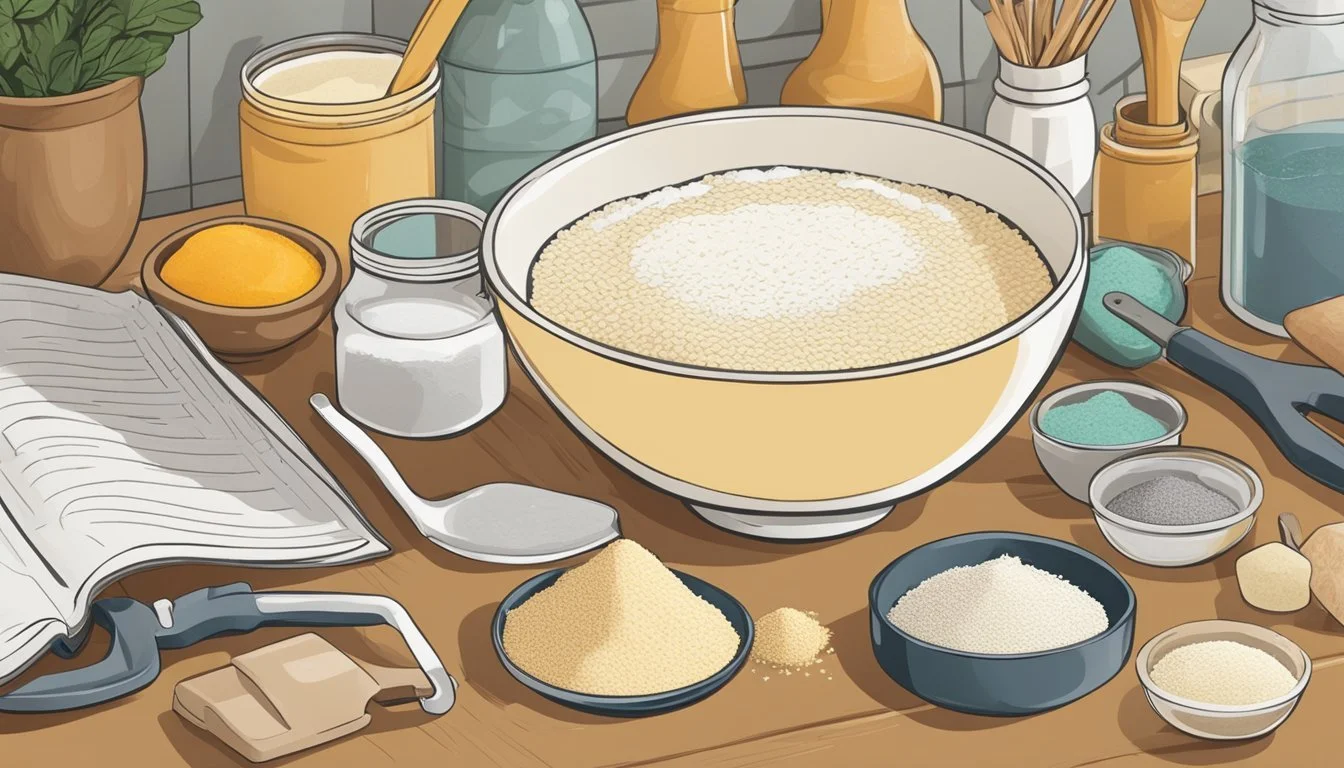Does Fresh Yeast Go Bad?
Storage Tips and Signs of Spoilage
Bakers know that yeast is a vital ingredient in making bread rise and achieving that perfect texture. While dry yeast is popular for its long shelf life, fresh yeast is often favored for its superior performance in baking. Yes, fresh yeast can go bad, and understanding its lifespan and signs of spoilage is essential for successful baking.
Fresh yeast typically has a shorter shelf life compared to its dry counterpart. Proper storage is crucial; it should be kept refrigerated and used within a few weeks to maintain its potency. When fresh yeast starts to spoil, it may become discolored, dry out, or show signs of mold.
Testing fresh yeast before use can save a batch of dough from rising failures. Bakers should look for bubbling or foaming when the yeast is proofed in warm water, indicating that it is still active. This simple test ensures that only viable yeast is used, leading to better baking results.
Understanding Yeast as a Living Organism
Yeast is a living organism essential for baking as it helps dough rise through fermentation. Different types of yeast, such as fresh and dry yeast, serve specific roles in baking.
Types of Yeast
There are several types of yeast used in baking: fresh yeast, active dry yeast, instant yeast, and cake yeast. Fresh yeast, also known as cake yeast, typically comes in a moist block.
It's highly perishable and must be stored in the refrigerator to maintain its potency.
Active dry yeast is dehydrated and comes in granules. It needs to be dissolved in water before use.
Instant yeast, on the other hand, is also dried but can be mixed directly with dry ingredients. Each type of yeast has a different shelf life and storage requirement.
The Role of Yeast in Baking
Yeast acts as a leavening agent in baking. When yeast is added to dough, it ferments sugars, producing carbon dioxide and alcohol.
The carbon dioxide creates bubbles in the dough, causing it to rise and giving bread its airy structure.
This process is vital for making not only bread but also other baked goods like cakes and pastries. The foam produced during fermentation is a visual indicator of yeast activity, ensuring the dough reaches optimal rise.
Fresh yeast, with its high moisture content, often results in a quicker rise compared to dry yeasts.
Shelf Life and Expiration
Fresh yeast and dry yeast have different shelf lives. Fresh yeast has a shorter shelf life, requiring precise storage and quick use, while dry yeast remains viable for much longer when kept in ideal conditions.
Fresh Yeast vs. Dry Yeast Shelf Life
Fresh yeast, also known as cake or compressed yeast, typically has a shelf life of about 2 to 3 weeks when refrigerated at a consistent temperature. The best-by date on packaging is a reliable indicator of when the yeast is at its peak.
If stored properly, this yeast may stay active for an additional 3-5 days after the best-by date. However, it's not recommended to rely on this extended period for critical baking projects. Unsurprisingly, fresh yeast can also be frozen, extending its usability up to 3 months with minimal degradation.
Dry yeast varieties, including active dry yeast and instant yeast, have a much longer shelf life. Unopened dry yeast can last up to 2 years from the packaging date, with a marked expiration date. Once opened, it can remain effective for up to 4 months if stored in a sealed container in the refrigerator.
Identifying Spoilage
Identifying whether yeast has gone bad is crucial for successful baking. One of the main indicators of spoilage for fresh yeast is the appearance of mold or other organic growth. It should always have a creamy, pale color; if it turns dark or develops any discoloration, it should be discarded.
Dry yeast generally doesn't show visible changes when it spoils. Instead, its activity diminishes over time. A simple test involves mixing the yeast with warm water and a teaspoon of sugar. If it does not foam and bubble within a few minutes, the yeast is likely no longer viable.
Both fresh and dry yeast can have a distinct, off-smell when spoiled. Fresh yeast should have a mild, yeasty odor. If it smells sour or off, it is no longer good.
In summary, checking the visual and olfactory signs can help determine the usability of both types of yeast, preventing unsuccessful baking endeavors.
Optimal Storage Conditions
Fresh yeast is highly perishable, so maintaining appropriate storage conditions is crucial to preserve its viability. Key factors include controlling temperature and moisture and using suitable storage containers.
Temperature and Moisture Factors
Fresh yeast needs to be stored at cool temperatures to last longer. The best place to keep it is in the refrigerator. Keeping it in the fridge can extend its shelf life up to two weeks.
Temperature and moisture control are critical. Fresh yeast is sensitive to humidity, which can cause clumping and premature activation. Ensure the yeast is kept in a dry environment to avoid moisture exposure.
For longer storage periods, you can freeze fresh yeast. Placing it in the freezer will extend its life further, up to three months. When preparing to use it after freezing, allow it to thaw slowly in the refrigerator.
Proper Storage Containers
Using the right packaging for fresh yeast is essential to maintain its effectiveness. Seal the yeast in an airtight container to prevent air and moisture from reaching it. Freezer bags can also work well if properly sealed.
If the yeast is in a packet, folding the top and securing it with tape can help maintain freshness. For larger quantities, placing the yeast in a zip-top bag after removing excess air is recommended. Always ensure the container is tightly sealed to keep out humidity and air, which can degrade the yeast.
In summary, store fresh yeast in cool, dry conditions, preferably in the refrigerator or freezer, and use airtight containers to maintain its potency.
Testing Yeast Viability
Testing yeast viability ensures yeast is still active and can effectively leaven dough. This process involves a few simple steps and interpretations, mainly focusing on factors like bubbling and aroma.
Performing a Freshness Test
Performing a freshness test involves proofing yeast. First, warm water to around 100°F (43°C) using a food thermometer. This is important to not kill the yeast. Add 1/4 cup of warm water to a small bowl.
Next, incorporate a teaspoon of sugar and 2 1/4 teaspoons of fresh yeast or yeast granules. Stir for about 15 seconds to combine the ingredients. Set the mixture aside for 10 minutes in a warm place.
Expect the mixture to bubble and form foam or froth on the surface if the yeast is active. This step is crucial in determining whether the yeast has retained its potency.
Interpreting the Results
After 10 minutes, inspect the yeast mixture. If foam or froth has developed and there is a distinct yeasty aroma, the yeast is active. The bubbling shows the yeast is still a living thing and ready to use.
If the yeast has doubled or tripled in size, it confirms its strong viability and freshness. Conversely, if there is no notable change, the yeast is likely expired or impotent.
In such cases, discard the yeast and use a substitute, such as 1/2 tablespoon of baking soda combined with 1/2 tablespoon of acid (lemon juice, vinegar, or buttermilk) per tablespoon of yeast in your recipe.
Using Yeast in Recipes
Using fresh yeast in recipes involves preparing it correctly and measuring the right amount for perfect results. These steps ensure that dough rises properly and the final product, whether it's bread or cakes, meets expectations.
Preparing Yeast for Baking
Fresh yeast needs to be activated before use. Start by crumbling the yeast into a small bowl. Add warm water (around 100°F to 110°F) to dissolve it, and include a pinch of sugar to feed the yeast.
It should become frothy after a few minutes, indicating that it's active and ready for use. If it doesn't foam, the yeast might be old or inactive. This process, called proofing, ensures that the yeast will work effectively in the dough.
To incorporate the yeast into the recipe, mix it with the dry ingredients. Make sure the water used is at the right temperature; too hot can kill the yeast, and too cold can slow down the activity.
Determining the Right Amount
The amount of fresh yeast required can vary based on the recipe. Typically, fresh yeast is more potent than dry yeast. As a general rule, use about twice the amount of fresh yeast as dry yeast (e.g., if a recipe calls for 1 teaspoon of dry yeast, use 2 teaspoons of fresh yeast).
Accuracy in measurement is crucial. Fresh yeast is usually measured in grams or ounces, so it's useful to have a kitchen scale. For home baking, a typical measurement might be 0.6 ounces for a standard loaf of bread.
Store fresh yeast properly to maintain its potency. It should be kept in the refrigerator or freezer. If stored in the cupboard, it can spoil quickly. Always check the expiration date and look for any signs of spoilage, like discoloration or an off smell.
Troubleshooting Common Yeast Issues
Understanding common problems with yeast is crucial for successful baking. Specific steps must be taken to activate yeast and replace expired yeast to ensure dough rises properly.
Dealing With Yeast That Won't Activate
When yeast won't activate, temperature and sugar are often the culprits. Fresh yeast is a living thing and needs specific conditions to work. Heat plays a vital role; water must be between 100-110°F (38-43°C).
If the water is too hot, it will kill the yeast. Too cold, and the yeast won't activate. Using a digital thermometer helps maintain the correct temperature. Granulated sugar is also essential, providing food for the yeast. Dissolve a teaspoon of sugar in warm water before adding the yeast.
If after 10 minutes the yeast mixture doesn't become frothy, it’s likely ineffective. Verify the expiration date and try a fresh package if necessary. Storing leftover yeast in the fridge helps maintain its effectiveness.
Replacing Expired Yeast
If yeast has expired, consider yeast substitutes like baking soda, lemon juice, vinegar, buttermilk, or cream of tartar. These substitutes can sometimes provide the necessary leavening.
Begin by testing the expired yeast. Dissolve it in warm water with a teaspoon of sugar. If it doesn't froth, replace it.
To substitute, use 1/4 teaspoon of baking soda with 1/2 teaspoon of an acid like lemon juice or vinegar per cup of flour. These combinations can produce a similar rising effect in the dough. Keep in mind, though, these substitutes might slightly alter the flavor and texture of your bread.
Storing yeast properly can extend its life. Keep unopened yeast in a cool, dry place and refrigerate any leftover yeast.



